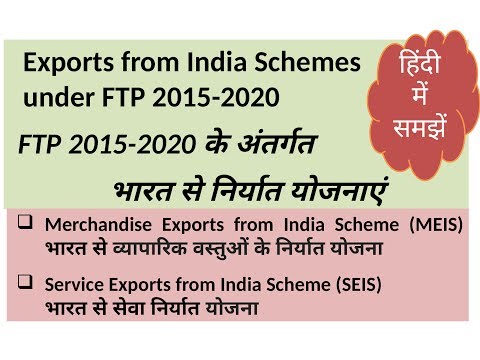WHAT IS THE FUNCTIONS OF INVENTORY MANAGEMENT ??


Items that are perishable, hazardous, or require refrigeration need special accommodations. These concerns create additional expense, along with warehouse personnel and theft protection. We provide you with handpicked material and question banks, time-proven exam strategies, exam analyses and simulated tests to give you a hands-on real-time test experience. Examples of raw materials include steel, oil, corn, grain, gasoline, lumber, forest resources, plastic, natural gas, coal, and minerals. Any Stores as such is a physical entity which deals with material receipt , preservation and issue. In a manufacturing firm this process forms a cycle to maintain and run the activities of Stores.
What are the 4 functions of inventory?
While there are many types of inventory, the four major ones are raw materials and components, work in progress, finished goods and maintenance, repair and operating supplies.
Forecasting uses your sales and production history to predict demand. It helps with decisions on reordering inventory, scheduling staff for production, and whether to hire more staff. This part of the system allows you to take control of your inventory needs.
The information provided on this website is for educational or information purposes only. Raw materials, semi-finished goods, and finished goods are the three main categories of inventory that are accounted for in a company’s financial accounts. There are other types as well which are maintained as a precautionary measure or for some other specific purpose. Of course , it also goes along the various activities and with development in the information technology domain, the record keeping in stores too is through electronic medium making the whole process smooth and efficient. In the long drawn process of preserving the materials till its use ,some materials might get obsolete and unserviceable and may require removal from stores , in order to clear space for other incoming goods.
It can also lead to vendor lock-in, obligating you to long-term relationships with suppliers. Ergonomics involves the design of work processes and systems to optimize the interaction between workers and materials. Ergonomics aims to minimize the risk of injury or strain to workers and improve efficiency by designing work processes that are comfortable, safe, and efficient. Effective ergonomics can improve worker productivity, reduce absenteeism, and minimize the risk of workplace injuries.
There are various functions of logistics management that are extremely essential for the seamless movement of goods or products. In the contemporary world, managing the logistics operations powered by modern technologies such as Artificial Intelligence, Internet of Things, Big Data, and so on can take your business to the next leap. Logistics processes play a vital role in delivering the right product or goods to the end customers at the right time. Inventory management involves making trade-offs between revenue, cost, and risk.
Almost all companies maintain safety stock inventory to protect against unexpected changes in supply and demand. In this way, inventory functions as a protection against the unexpected, and as a buffer against production shutdowns. Safety stock represents a balance between service or fill rates and the additional cost of ordering and holding more inventory. The consequence of not having enough inventory are stock-outs, which can be detrimental to a business especially if customers have alternatives, such as ecommerce-based businesses where rapid fulfillment is expected. Stock-outs represent lost revenue and can adversely affect customer loyalty.
What are important functions of management?
Stocking safety stocks can reduce shortage risks by compensating for demand and lead time variations by holding stocks above average demand. This includes those materials that have already been committed to the production process but have not yet been completed. The more complex and lengthier the production process, the larger will be the investment in work in process inventory will be needed. This consists of basic materials that have not yet been still engaged to production in a manufacturing firm. Raw materials which are purchased from the firms are then used in the firm’s production and then utilised in its operations. OptiProERP is a leading global provider of industry-specific ERP solutions for manufacturers and distributors.
Materials management is a core supply chain function and includes supply chain planning and supply chain execution capabilities. Specifically, materials management is the capability firms use to plan total material requirements. The material requirements are communicated to procurement and other functions for sourcing. The basic job of the Stores Manager hence is to receive the goods and act as a caretaker of the materials and issue them as and when Production demands it. Needless to say storekeeping activity does not add any value to the product. All of these get added to the organisational overheads and finally get reflected in the costing of the finished product.
- Review historical records of your safety stock levels to see if you need to make adjustments.
- One of the major functions of inventory management software is its ability to generate meaningful reports that give you a clear picture of inventory.
- It is critical for each company to manage its inventory effectively with no excess stock stored and meeting the client requirements.
- In this way, inventory functions as a protection against the unexpected, and as a buffer against production shutdowns.
An inventory management system is important for companies with large amounts of inventory in order to keep it at optimal levels. Simplification involves the simplification of processes and procedures for the acquisition, use, and disposal of materials. Simplification aims to streamline processes and reduce the time and effort required to manage inventory. By simplifying processes, organizations can reduce costs and improve efficiency.
Grouping orders and/or ordering at regular intervals may be practical or economical in certain circumstances. When purchasing, a firm often buys in excess of its immediate needs in order to minimize inventory costs. To utilize the purchased amount later, some or all of it must be stored. The production of large quantities is typically more economical than that of small quantities. A storage facility must be provided for the surplus output in order to be used later.
Production and Operations Management Related Interview Questions
A production-distribution system is also characterized by intermediate stocking of goods in both production sites and warehouses, including raw materials, semifinished items, and finished goods. It indicates that the average inventory amount in a system is equal to the product of the average rate at which inventory units leave the system and the average time each unit spends there. A real-time view of stocking levels and their location helps them better manage production schedules and customer order processing. This involves physical control of materials, preservation of stores, minimization of obsolescence and damage through timely disposal and efficient handling, maintenance of stores records, proper location and stocking. A store is also responsible for the physical verification of stocks and reconciling them with book figures.
What are the functions of inventory?
- Ordering raw materials, or finished products from a supplier.
- Handling and tracking purchased materials or products.
- Storing in a safe, yet easily accessible environment, such as an on-site warehouse.
Depending on their business model, companies use a number of different methods to manage inventory. Inventory costs the company money, but it may be necessary to hold more safety stock to maintain superior service levels to avoid stockouts and to maximize operational efficiency. Manufacturers with expensive machine and people operations will sometimes carry excess inventory to avoid shutting down these operations due to a lack of inventory—which would cost the company more money. All companies must strike a balance between inventory levels and demand because inventory consumes a company’s cash and incurs carrying costs. Regardless of the type of business, companies must maintain tight control over inventory to conserve cash while ensuring they have enough stock to meet production schedules or forecasted customer demand and actual orders.
Budget Management
The interval between receiving the purchased parts and transforming them into final products varies from industries to industries depending upon the cycle time of manufacture. It is, therefore, necessary to hold inventories of various kinds to act as a buffer between supply and demand for efficient operation of the system. Thus, an effective control on inventory is a must for smooth and efficient running of the production cycle with least interruptions.
It can help organizations to get real-time insightful data with new-age technologies. Analyzing those data is useful in evaluating overall delivery effectiveness. Therefore, embracing the latest technological innovations strengthens the business goals by significantly impacting the decisions and making the operations more cost-effective. The primary function of inventory is to use marketing and production to increase profitability, to get the maximum amount for the business’ investment. There are other functions of inventory, such as balancing supply and demand, improving efficiency, establishing a safety stock and geographical specialization.
When talking about inventory, it is vital that one of the functions of inventory management software is to be flexible to suit your business requirements. No two business functions are alike and similarly, the inventory management system must enable you to customise and define parameters as per your needs. Right from organising stock your way to moulding business processes such as sales, purchases, etc. TallyPrime is one of the most flexible business management software solutions to manage your inventories. TallyPrime provides all the major features and functions of inventory management. It is one of the best business management software solutions and includes inventory management for SMEs.
An ERP system integrates all aspects of your operation – from planning to production to purchasing. Instead of connecting several different systems, you use one system and database. That way, you can manage your entire operation and optimize your inventory. You’ll also want to learn what’s involved with the transition, how the vendor will assist you in the change from manual to automated processes, and what level of training is offered. Machine learning helps chatbots know what is in stock, or what a customer may like based on their purchasing history.
Inventory Days
It is quicker to implement, easier to upgrade, simpler to use, and can scale with your business. “C items” with the simplest controls possible and minimal records. Global Shop Solutions is the largest privately held ERP software company in the United States. Just as Lay out of a Stores is designed considering the nature of material Stores has to handle, material movement equipment and implements also are important. Expansion is a phase in which, when the economy moves from a trough to a peak.
Overall, inventory management should not be seen as a part of your business that you can do manually because it can get complex pretty quickly especially if you have multiple product lines. During that time, cash remains tied up, and companies must ensure their inventory is sold in a timely manner to return the cash to the business. Slow-moving inventory incurs holding costs, risks, and adversely affects a company’s cash flow. Accordingly, companies require a disciplined process to ensure that the level of inventory investment is in line with the expected level of customer demand.
What are the functions of materials inventory?
The main functions of the inventory supervision consists of (1) getting the raw materials effectively, (2) storing and mantaining the materials and goods orderly and propperly, (3) distributing raw materials and goods effectively causing for the effective production process and cost, (4) minimalizing investation in …
It is, therefore, necessary to hold inventories of various kinds to act as a buffer between supply and demand for the efficient operation of the system. Thus, effective control on inventory is a must for the smooth and efficient running of the production cycle with the least interruptions. TallyPrime has a manufacture and expiry date management feature that ensures your business gets a complete 360-degree view of the stock for goods that have limited shelf-life. The inventory management solution enables effective tracking of the numerous costs such as the job costs, landing costs, production costs, and procurement costs.
Intelligent order management
While inventory management is common across most industries, there are particular industries with unique requirements that warrant specialized systems. You’ll want to understand all of the costs involved in implementing the new software. Make sure it can handle what you currently process while having plenty of room for growth. If you are connecting systems, your in-house IT will need to manage updates to ensure the systems continue to work together. The best way to know what your business needs from an inventory management system is to identify your problem areas.

The software used for the process helps in tracking the flow of products from supplier through the production process to the customer. In the warehouse, inventory management helps in tracking receipt of stock, picking, packing and shipping. All functions, functions of inventories in any business or organization, are connected and interlinked to each other and are often overlapping. Some key aspects like inventory management, supply chain management, and logistics are the foundation of the business delivery function.
What are the three functions of inventories?
1) To meet the anticipated demand of customers. 2) As a means of smoothing production requirements. 3) In order to decouple operations.
